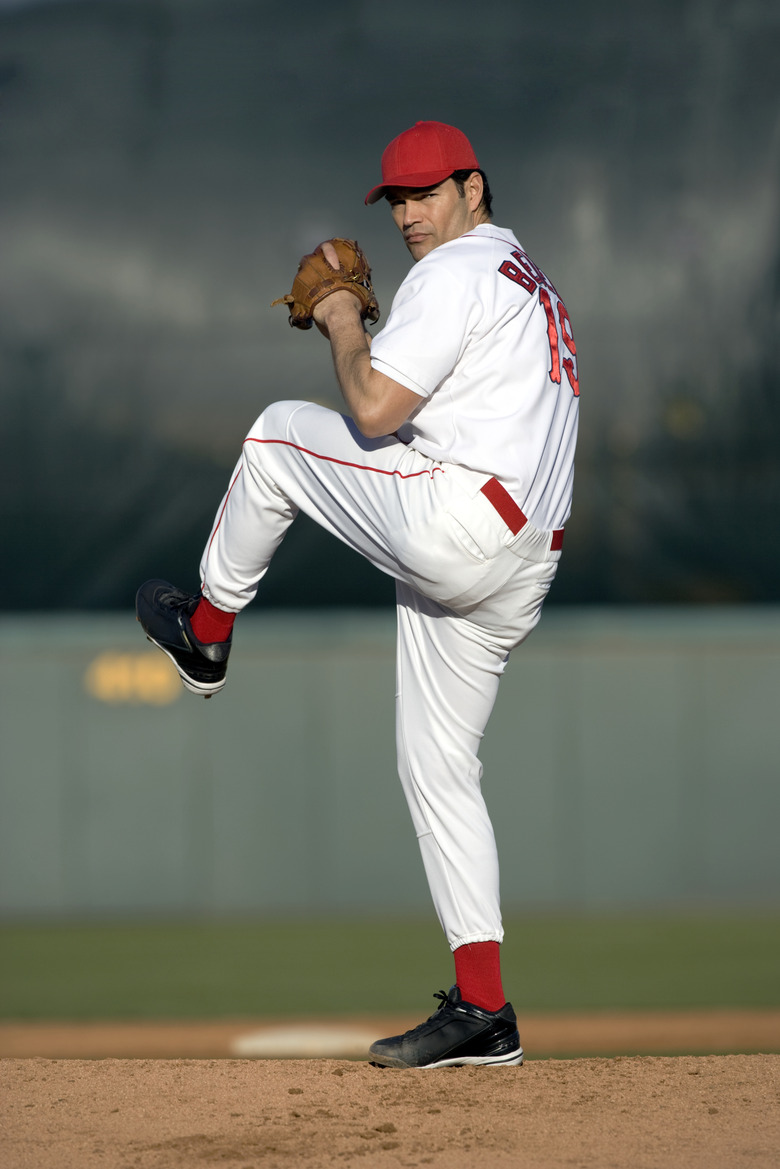Experiments On Mechanical Energy For Kids
If you wind a clock, you give it the energy to operate; if you rear back then throw a football, you give it the energy to fly to its target. In both cases, the objects gain mechanical energy, which is energy that an object gains when someone or something performs some sort of work on it. Many science experiments can teach children about this type of stored energy.
Pitching: The Windup and the Stretch
Pitching: The Windup and the Stretch
When there are no runners on base, a pitcher will generally use a more complete motion, called the windup. To keep baserunners from stealing, though, pitchers will use a more compact motion called the "stretch." If you have some pitching expertise and a radar gun, you can do this experiment after a warmup. Have one friend catch your pitches and another hold the radar gun. Throw 20 fastballs, 10 from the windup and 10 from the stretch. Alternate with the windup and the stretch, keeping track of each pitch's speed. Track whether the windup, with its increased motion, allows you to throw the pitches faster. If you don't know how to throw these pitches, watch a baseball game and track the pitcher's speed on fastballs from the windup and the stretch; the pitch speed usually appears on the television screen after each pitch.
Converting Solar Energy to Mechanical Energy
Converting Solar Energy to Mechanical Energy
Many different kits are available for your young scientists to observe how the sun's energy can turn into mechanical energy. Depending on the kit, they can install small solar panels and connect them to such devices as cars, airplanes, windmills — and a puppy. The solar panels store the energy, and the photovoltaic components will convert the solar power to turn the devices.
Hydroelectric Power and Mechanical Energy
Hydroelectric Power and Mechanical Energy
You can make a simple hydroelectric generator with a cork, cardboard, and two small nails, with this experiment from EnergyQuest. Cut six or eight pieces of cardboard as long as the cork and an inch wide, and slide them into the cork, evenly distributed around the circumference. Fold a long, skinny piece of cardboard into a "U" shape and insert a nail in each end, extending into the ends of the cork. Running water past this cork will turn the cardboard blades, in turn rotating the cork. This rotation is the source of mechanical energy and is the force behind hydroelectric power plants.
Catapults and Mechanical Energy
Catapults and Mechanical Energy
Using a newspaper, a spoon, masking or painter's tape and a rubber band, you can assemble a simple catapult, according to this project from Spaghetti Box Kids. Take a section from a newspaper and roll it so that it looks like a cylinder. Wrap tape firmly around the middle and lay the newspaper on an extended rubber band (the loops out to each side of the newspaper). Bring the ends of the band up to the center and run one through the other. Then, slide the spoon through the extra rubber band and slide it down about halfway. Secure the ends of the newspaper roll to a horizontal surface, and you now have a catapult. Each time you pull the spoon back, building resistance against the rubber bands, you add mechanical energy to the spoon (and the object to be thrown).
Cite This Article
MLA
Contributor, . "Experiments On Mechanical Energy For Kids" sciencing.com, https://www.sciencing.com/experiments-mechanical-energy-kids-10067494/. 24 April 2017.
APA
Contributor, . (2017, April 24). Experiments On Mechanical Energy For Kids. sciencing.com. Retrieved from https://www.sciencing.com/experiments-mechanical-energy-kids-10067494/
Chicago
Contributor, . Experiments On Mechanical Energy For Kids last modified August 30, 2022. https://www.sciencing.com/experiments-mechanical-energy-kids-10067494/
